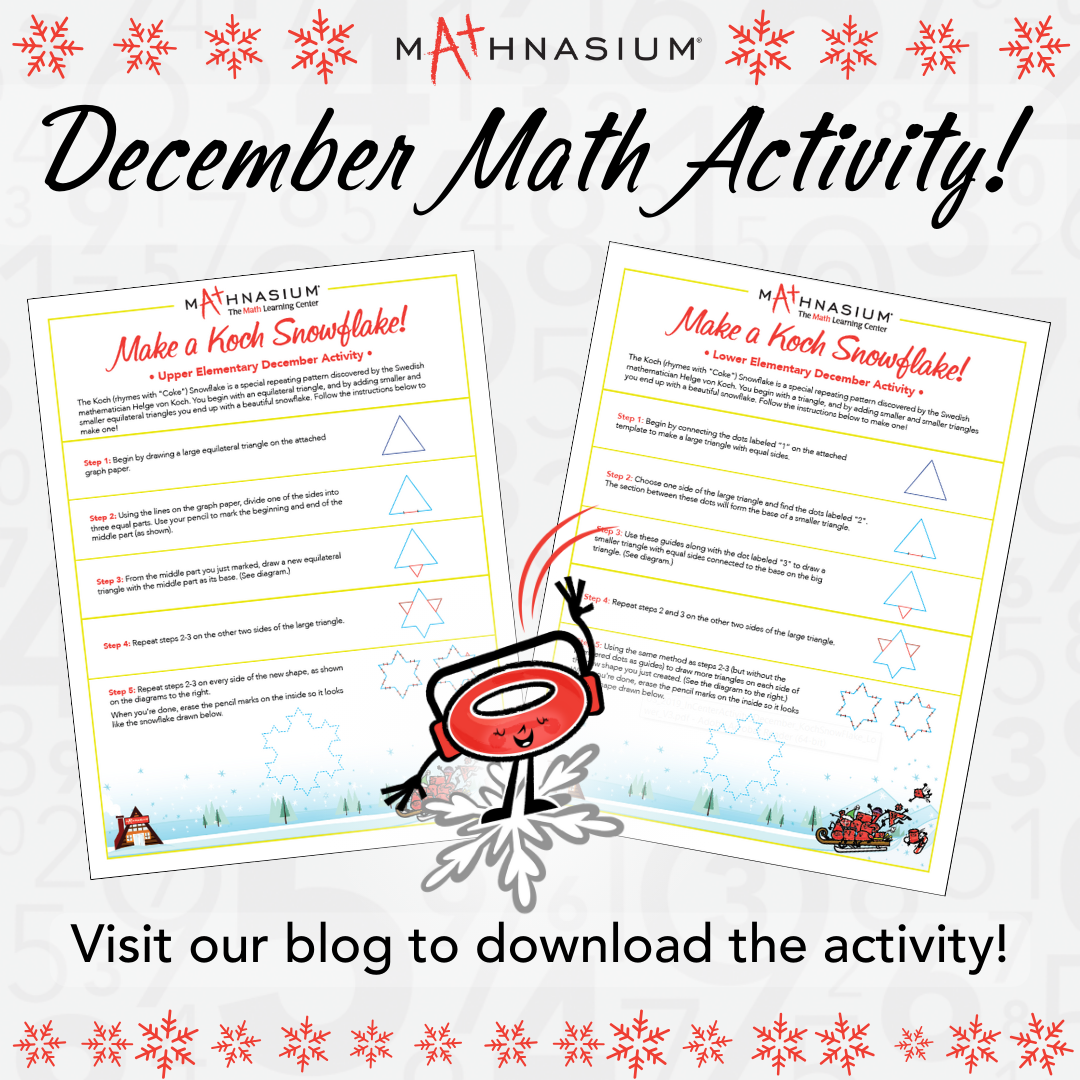The Beauty of Math Patterns: Exploring Mathematical Sequences
Explore the fascinating world of math patterns, from Fibonacci sequences to fractals. Read our blog to learn more.

In several regions of the United States, we begin to see the first snowfall of the winter season. Today, we are taking a look at the special mathematical Koch snowflake. This geometric object can be created from the union of many equilateral triangles and is a fractal curve first brought to light by Swedish mathematician Helge von Koch in 1904. Famous for its unique properties, its area is finite (which, in progression, converges to 8/5 times the area of the original triangle), but its perimeter is infinite. Isn’t it intriguing and beautiful?
This December, we have a Mathnasium “Make a Koch Snowflake” activity that you can do at home with your child. Select the appropriate level for your child (Lower Elementary or Upper Elementary), download the pages (below), and settle in for some artistic, mathematical fun!
Make a Koch Snowflake Activity — Lower Elementary
Make a Koch Snowflake Activity — Upper Elementary
For more math activities, follow our Number Sense Blog, or visit a Mathnasium Center nearest you.


Mathnasium meets your child where they are and helps them with the customized program they need, for any level of mathematics.
